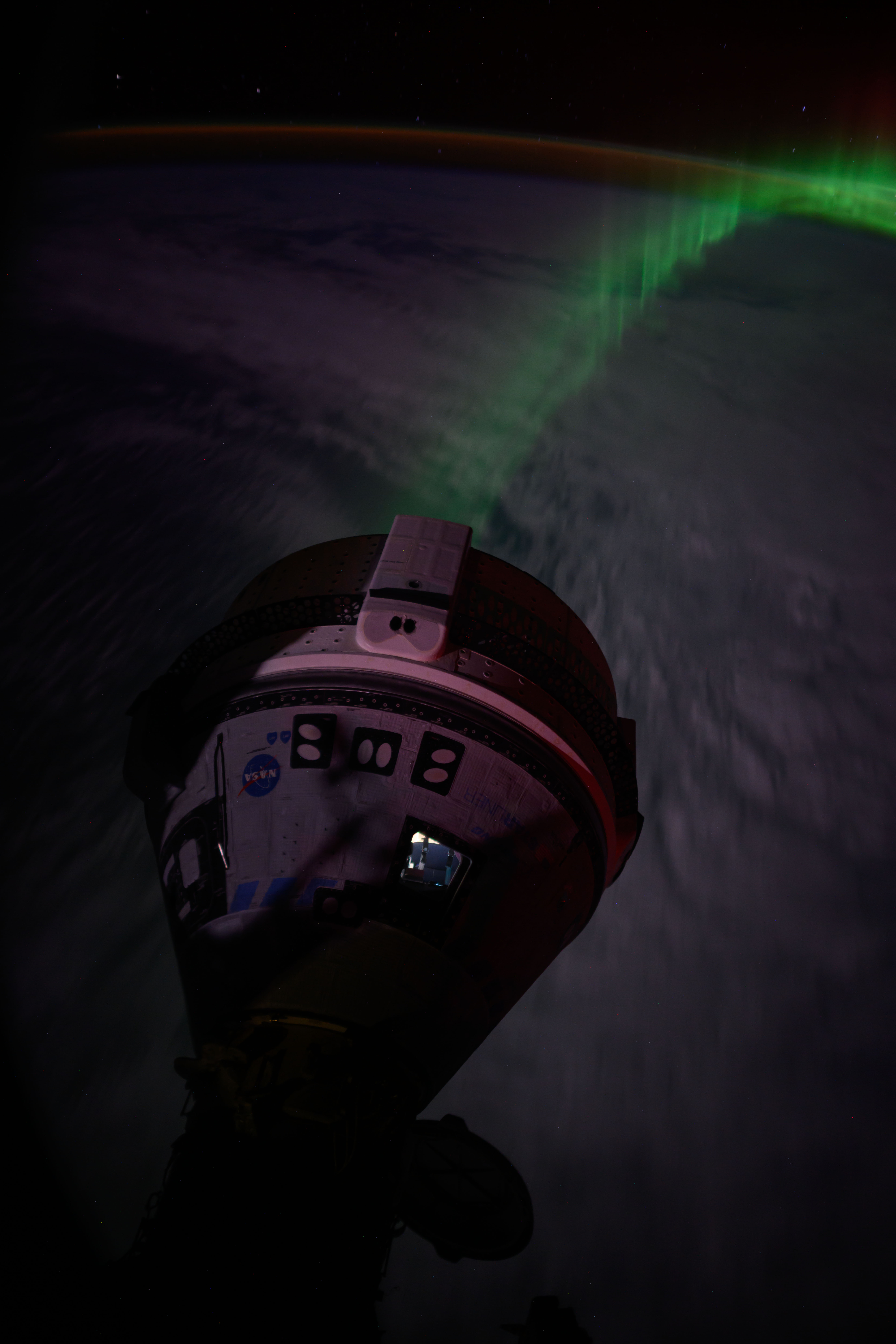Crews Conduct Spacewalk Review, Physics Research, and Orbital Plumbing

The nine residents aboard the International Space Station comprising both the Expedition 71 and NASA’s Boeing Crew Flight Test teams had a day filled with spacesuit checks, advanced microgravity research, and orbital lab maintenance.
NASA Flight Engineers Tracy C. Dyson and Mike Barratt kept up their spacewalk preparations following the early end to Monday’s excursion. The duo’s spacewalk only lasted 31 minutes following a water leak in the service and cooling umbilical unit on Dyson’s spacesuit. Dyson and Barratt safely ended the spacewalk, repressurized the Quest airlock, and removed their spacesuits just over an hour after the spacewalk ended.
Barratt began Tuesday morning troubleshooting Dyson’s spacesuit and inspecting the suit’s components. Afterward, he joined Dyson for ongoing procedure reviews with fellow astronauts Matthew Dominick and Jeanette Epps for future spacewalks.
Dyson wrapped up her day swapping out a water resupply tank in the Destiny laboratory module while Barratt serviced spacesuit lithium-ion batteries in Quest. Dominick worked in the Kibo laboratory module testing flight trajectories and gesture-recognition software on an Astrobee robotic free flyer. Epps traded foam samples inside the Columbus laboratory module for a fluid physics investigation exploring the hydrodynamics of wet foams potentially benefitting mechanical and industrial processes.
NASA astronauts Butch Wilmore and Suni Williams, Starliner Commander and Pilot respectively, spent Tuesday inside the Harmony module maintaining orbital plumbing gear. The Crew Flight Test duo replaced the pressure control and pump assembly motor that supports the space station’s main restroom, also known as the waste and hygiene compartment, in the Tranquility module.
Working in the Roscosmos segment of the orbiting outpost, Station Commander Oleg Kononenko photographed the condition of handrails in the Zvezda, Poisk, and Nauka modules to determine of they need replacing. Flight Engineer Nikolai Chub swapped out toilet components inside Zvezda during the morning. He then spent the afternoon with Flight Engineer Alexander Grebenkin collecting microbial air samples in the Roscosmos modules for analysis. During his morning, Grebenkin downloaded radiation data then explored spacecraft and robotic piloting techniques future crews might use on planetary missions.
Learn more about station activities by following the space station blog, @space_station and @ISS_Research on X, as well as the ISS Facebook and ISS Instagram accounts.
Get weekly video highlights at: https://roundupreads.jsc.nasa.gov/videoupdate/
Get the latest from NASA delivered every week. Subscribe here: www.nasa.gov/subscribe
Powered by WPeMatico
Mark Garcia







